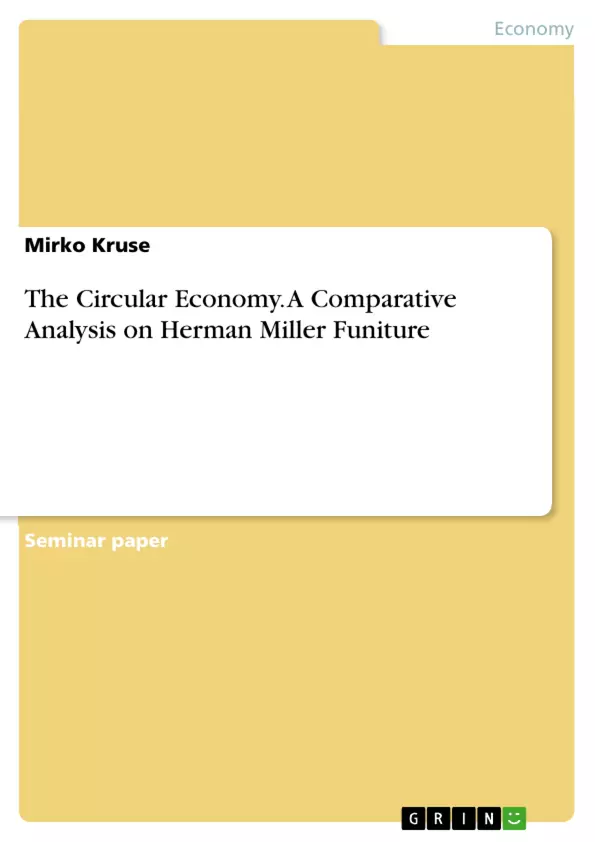This essay will introduce the theoretic foundations of the circular economy approach before analysing the practical implementation using the example of the furniture producing company Herman Miller. Thereby, the following analysis will be two-part: Firstly on a micro / meso level by comparing the implementation approach with another company producing office chairs and, secondly, on a macro level by evaluating the circular principle regarding its implementations on making the whole economy more sustainable.
Inhaltsverzeichnis (Table of Contents)
- Introduction
- The Circular Economy
- Cradle to Cradle in practice at Herman Miller
- Herman Miller in comparison
- About Cradle to Cradle on a larger scale
- Conclusion
- References
Zielsetzung und Themenschwerpunkte (Objectives and Key Themes)
This essay aims to introduce the theoretical foundations of the circular economy and analyze its practical implementation using the example of Herman Miller Furniture. It compares Herman Miller's approach with other companies and explores the circular economy's potential to make the entire economy more sustainable.
- The Circular Economy: Its concept and benefits.
- Cradle to Cradle: A design philosophy for a circular economy.
- Herman Miller's implementation of Cradle to Cradle principles.
- The potential of the circular economy for global sustainability.
- Challenges and limitations of implementing the circular economy.
Zusammenfassung der Kapitel (Chapter Summaries)
The introduction highlights the growing need for alternatives to the traditional linear economy due to environmental concerns and resource depletion. The circular economy is presented as a potential solution, aiming to close production and consumption loops for more sustainable practices.
The chapter on the circular economy discusses its history, concepts, and key principles. It emphasizes the idea of "waste equals food," where byproducts are reintegrated into the production cycle. The chapter also explores the role of "cradle to cradle" as a practical framework for circularity.
The chapter on Herman Miller focuses on the company's approach to sustainability and its implementation of Cradle to Cradle principles. It highlights the company's commitment to environmental responsibility and its integration of social and ethical considerations into its business practices.
Schlüsselwörter (Keywords)
The main keywords and focus topics of this essay include: circular economy, cradle to cradle, sustainability, industrial ecology, Herman Miller, waste reduction, resource efficiency, closed loop production, sustainable design, and triple bottom line.
- Quote paper
- Mirko Kruse (Author), 2016, The Circular Economy. A Comparative Analysis on Herman Miller Funiture, Munich, GRIN Verlag, https://www.grin.com/document/377516



